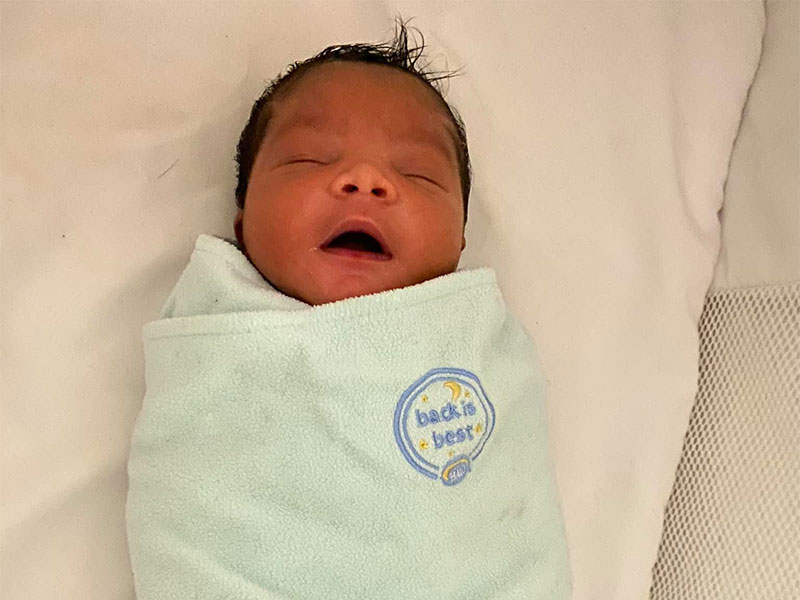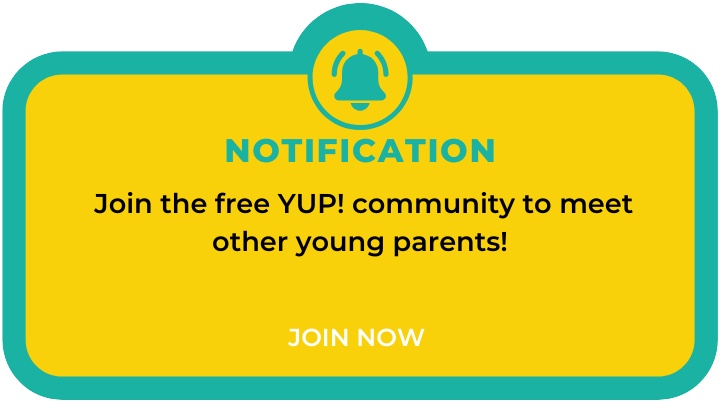Safe Sleep

Every parent wants their baby to be as safe as possible while sleeping. Unfortunately, one of the biggest challenges for new parents is lack of sleep–and sometimes, you’d do just about anything to catch some zzzzz’s. Sadly, many parents’ simply don’t know how–and were not taught–to practice safe sleep.
Sleep-related deaths in infants are tragic, but they are accidental. These accidents can be prevented. It is so important that both new and seasoned parents know the dangers of unsafe sleep and are given the correct information when it comes to safe sleep for infants. YUP! is here to provide young parents the tools you need to help keep your baby safe.
What is Safe Sleep?
Safe sleep is putting your baby to sleep in a way that protects them from hazards such as strangulation, entrapment, and suffocation. Although stuffed animals and baby blankets are adorable, the truth is that babies don’t need anything in their crib with them other than a fitted sheet and a pacifier (if desired). However, safe sleep is more than just laying your baby in the crib with no blankets or pillows. Safe sleep also includes no pacifier clips, no hats, no bumpers, and no toys in the crib either.
Why is Safe Sleep Important?
Sadly, there are about 3,500 infant sleep related deaths each year in the US. Bedsharing, which is when the baby sleeps in the same surface (bed, couch, chair) with another person, contributes to more than 69% of all sleep-related deaths.
Babies who bed share may be at risk for the following:
- Overheating
- Suffocation
- Strangulation
- SIDS
Safe sleep is also known to lower your baby’s risk of Sudden Infant Death Syndrome (SIDS). SIDS is the sudden and unexplained death of an otherwise healthy baby. When practicing safe sleep, the risk of SIDS is less than 1%.
The ABC’s of Safe Sleep
Alone - Baby should be in a sleep space by themselves with nothing in the space except for a fitted sheet and a pacifier (if desired). Pacifiers are okay to have in a baby’s sleep space because they have been proven to decrease a baby’s risk of SIDS.
Back - Your baby should always be placed on their back when being put to sleep. If they roll over on their own, it is fine to leave them. A baby who is placed on their stomach may not know how to roll back over and can get stuck in a compromising position or possibly overheat.
Crib - Your baby should always be placed to sleep in a bassinet, crib, or Playard that passes correct safe sleep safety standards and has a firm mattress. You can also personally contact the manufacturer of the product and ask what safety standards the product passed. To ensure that you are using the safe sleep space correctly and safely, it is always best to read the manual that came with your product.
Safe Sleep Resources
There are so many resources out there to help parents follow safe sleep guidelines.
- Some organizations will give free playpens, sleep sacks, and pacifiers to families who need them
- Some organizations and hospitals provide free classes to educate new or seasoned parents on safe sleep and the dangers of unsafe sleep
- There are even organizations who will look at your registry for you and remove any unsafe sleep items you may have listed on there.
Any parent knows how important sleep is, and how confusing it can be to find the right information out there. Safe sleep can be tricky to grasp at first, but that’s why YUP! is here: to make sure you are informed and know exactly how to keep your baby as safe as possible when sleeping.
Resources:
The Michigan Department of Health and Human Services has lots of videos to answer other questions you may have about safe sleep.
American Academy of Pediatrics: https://www.aap.org/en/patient-care/safe-sleep/
Cribs for Kids has a helpful map for low income parents to find safe sleep materials in their area: https://cribsforkids.org/request-a-crib/
Planning a registry? Safe Infant Sleep has a registry service that can help make sure you only get safe sleep items for your baby.
The Centers for Disease Control offers information on helping babies sleep safely: https://www.cdc.gov/reproductivehealth/features/baby-safe-sleep/index.html
And preventing hazards for infant sleep: https://www.cdc.gov/vitalsigns/safesleep/index.html
